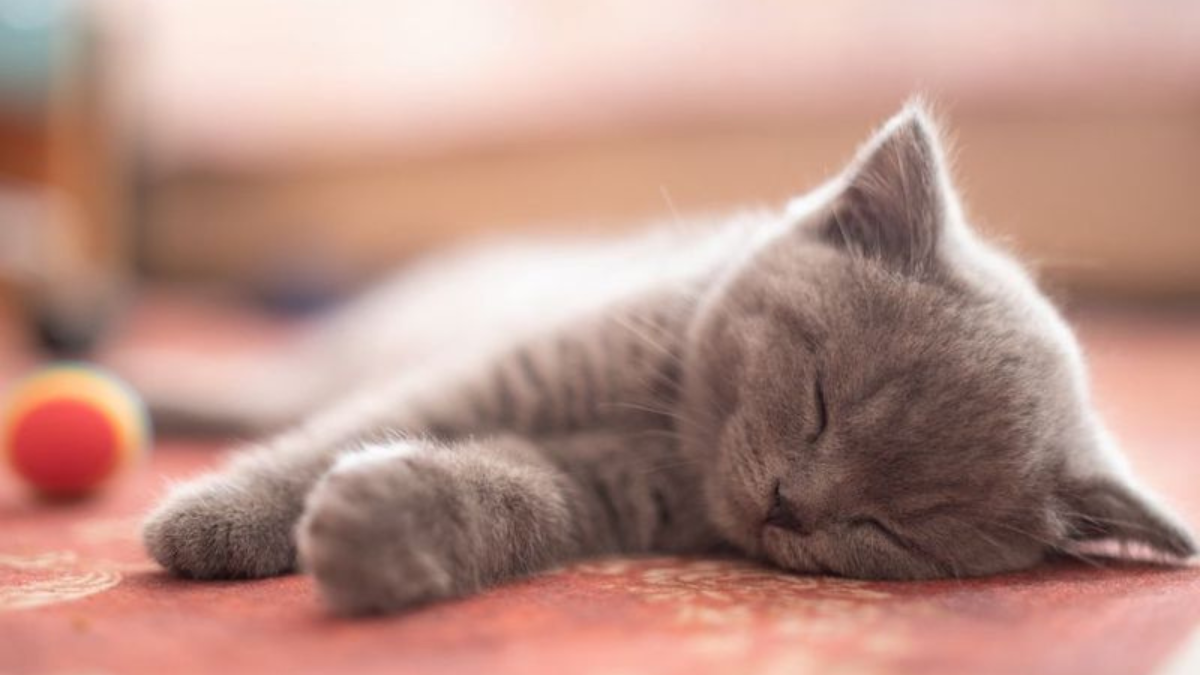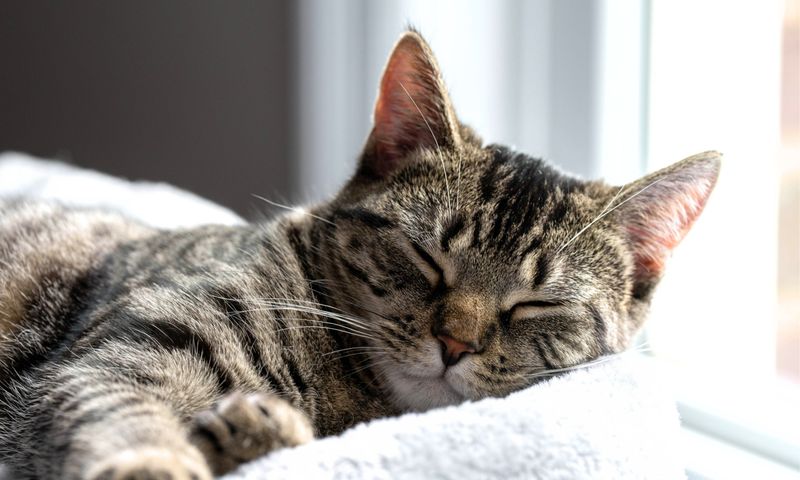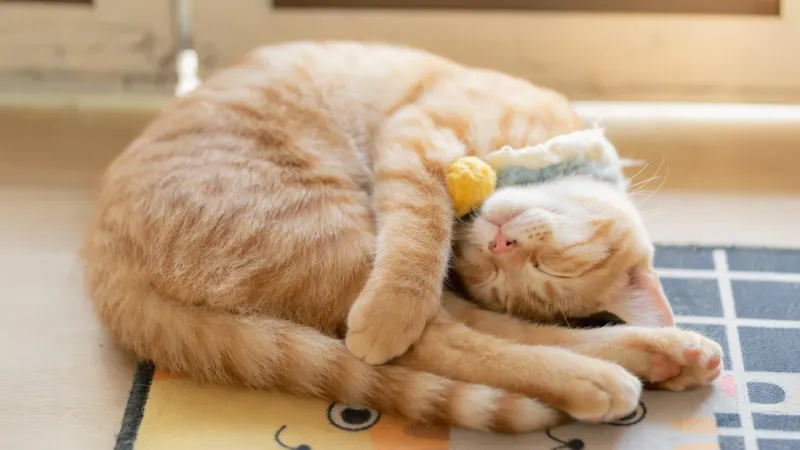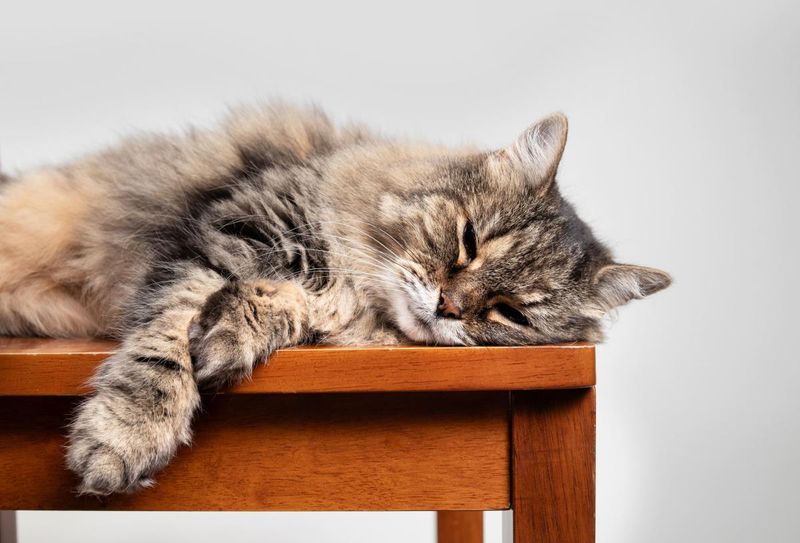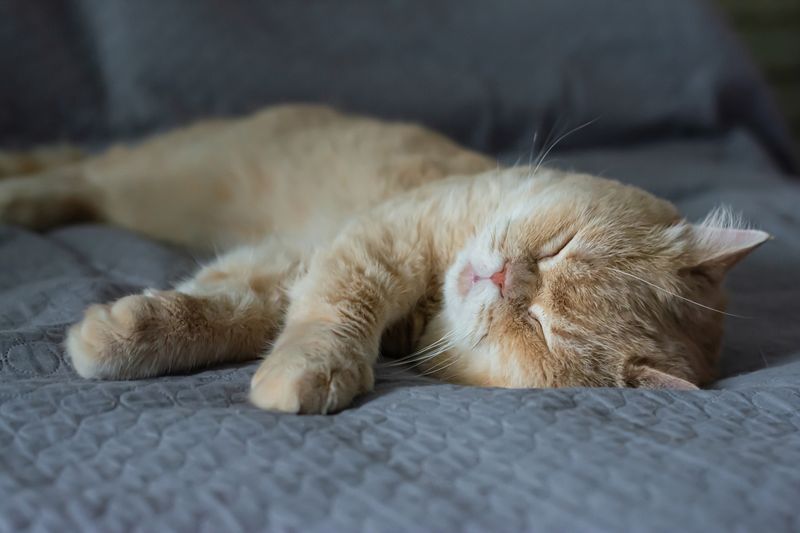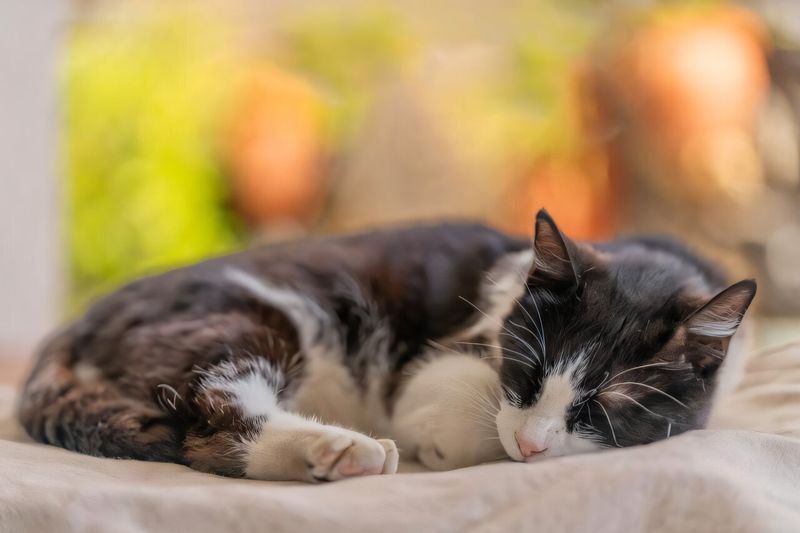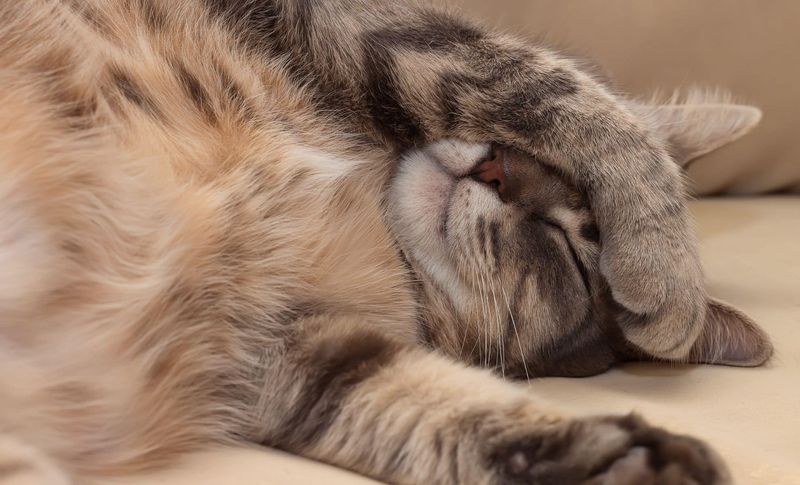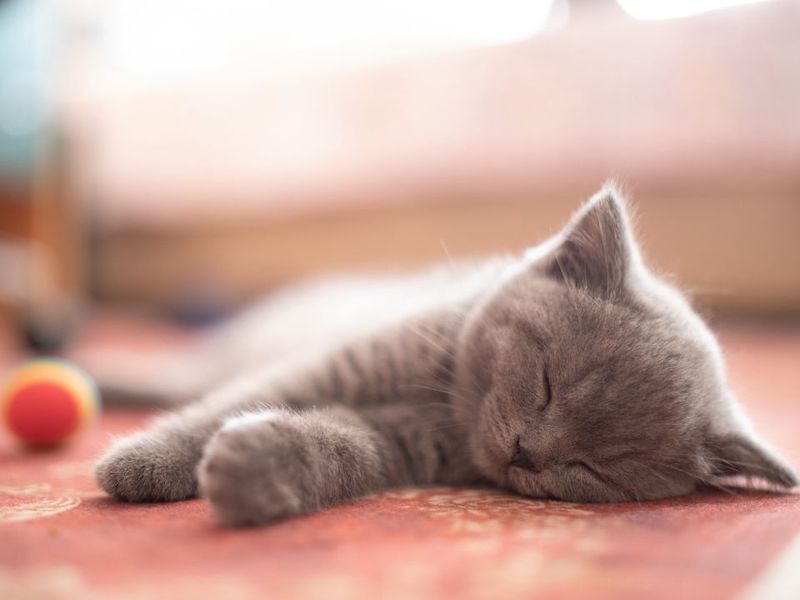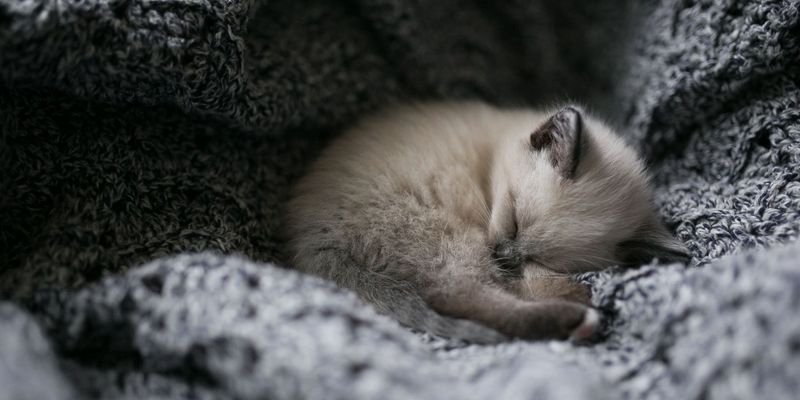📖 Table of Content:
Cats spend up to 16 hours a day sleeping, and many cat owners notice their feline friends often choose to sleep on their left side. This sleeping position isn’t just a random choice – it actually offers several benefits for our furry companions. Understanding why cats prefer this position can help us better care for them and recognize when something might be off with their health.
1. Heart Protection Instinct
The left-side sleeping position naturally shields a cat’s heart. Since a cat’s heart is slightly oriented toward the left side of their chest, this position puts less pressure on this vital organ during sleep.
Wild cats developed this instinct to protect their most vulnerable organ from potential predators. Even though our house cats live safe lives, this ancient survival mechanism remains programmed in their DNA.
Veterinarians often observe this position more frequently in older cats with heart conditions, suggesting it might provide them with greater comfort when their cardiovascular system needs extra care.
2. Digestive System Benefits
Cats’ stomachs sit slightly to the left in their abdominal cavity. When they rest on this side, food moves more efficiently through their digestive tract, especially after a big meal.
Left-side sleeping allows gravity to assist the digestive process by helping food travel naturally from the stomach into the small intestine. This position can reduce discomfort from hairballs or other digestive issues that cats commonly experience.
Many cat owners notice their pets shifting to this position shortly after eating, particularly when they’ve consumed a larger meal than usual.
3. Temperature Regulation Advantage
Sleeping on the left side exposes less of a cat’s body surface to the environment. This position helps them maintain body heat during cooler weather, as less of their core is exposed to the air.
The left-side position also allows for optimal blood circulation. Cats regulate their temperature partly through blood flow, and this sleeping arrangement creates an efficient heating system for their bodies.
During warmer months, you might notice your cat still prefers this position but stretches out more to release excess heat while maintaining the comfort of the left-side orientation.
4. Spleen Support Function
A cat’s spleen sits on the left side of their abdomen. When sleeping on their left side, cats provide natural support to this important organ that filters blood and stores red blood cells.
The spleen works harder during rest periods to cleanse blood and release stored cells when needed. Left-side sleeping positions the spleen optimally for performing these vital functions during a cat’s lengthy sleep sessions.
Senior cats particularly benefit from this position as their immune systems require more support, and the spleen plays a crucial role in maintaining their overall health and fighting infections.
5. Improved Breathing Patterns
Because a cat’s right lung is bigger, lying on the left side allows it to expand more freely, making breathing easier and more effective during sleep.
Cats with respiratory conditions often instinctively choose this position. Owners of cats with asthma or allergies might notice their pets favoring left-side sleeping during flare-ups to ease breathing difficulties.
This natural position reduces pressure on the diaphragm, allowing for deeper, more restful breathing cycles that contribute to better quality sleep and faster recovery from illness.
6. Stress Reduction Effect
This position supports a cat’s “rest and digest” system, helping to slow heart rate and blood pressure while promoting a sense of security.
Cats in multi-pet households often adopt this position when they finally find a safe, quiet spot to rest. The physical comfort combines with psychological security to create the perfect conditions for deep, restorative sleep.
Anxious cats frequently default to this position when they begin to feel comfortable in a new environment, signaling to their owners that they’re starting to trust their surroundings.
7. Predator Awareness Advantage
Cats’ ears remain more alert when they sleep on their left side. Their right ear often stays positioned toward potential danger zones, allowing them to detect threats even during deep sleep cycles.
This sleeping style evolved from wild cats who needed to remain somewhat vigilant while resting. The position keeps their stronger hind legs in a ready position to spring into action if needed, combining rest with readiness.
Indoor cats maintain this instinctual position despite the absence of predators. You might notice your cat’s ears twitching during sleep in this position, processing sounds while their body gets much-needed rest.
8. Muscle Recovery Facilitation
By reducing pressure points and supporting natural alignment, left-side sleeping lets cats fully relax their muscles after bursts of intense movement.
Blood flow increases to tired muscles in this position. Cats instinctively know this helps them heal minor strains and prepares them for their next burst of energy.
Kittens particularly benefit from left-side sleeping during growth spurts when their bodies need efficient recovery. Their developing muscles and bones receive balanced support, promoting healthy physical development during crucial growth phases.
